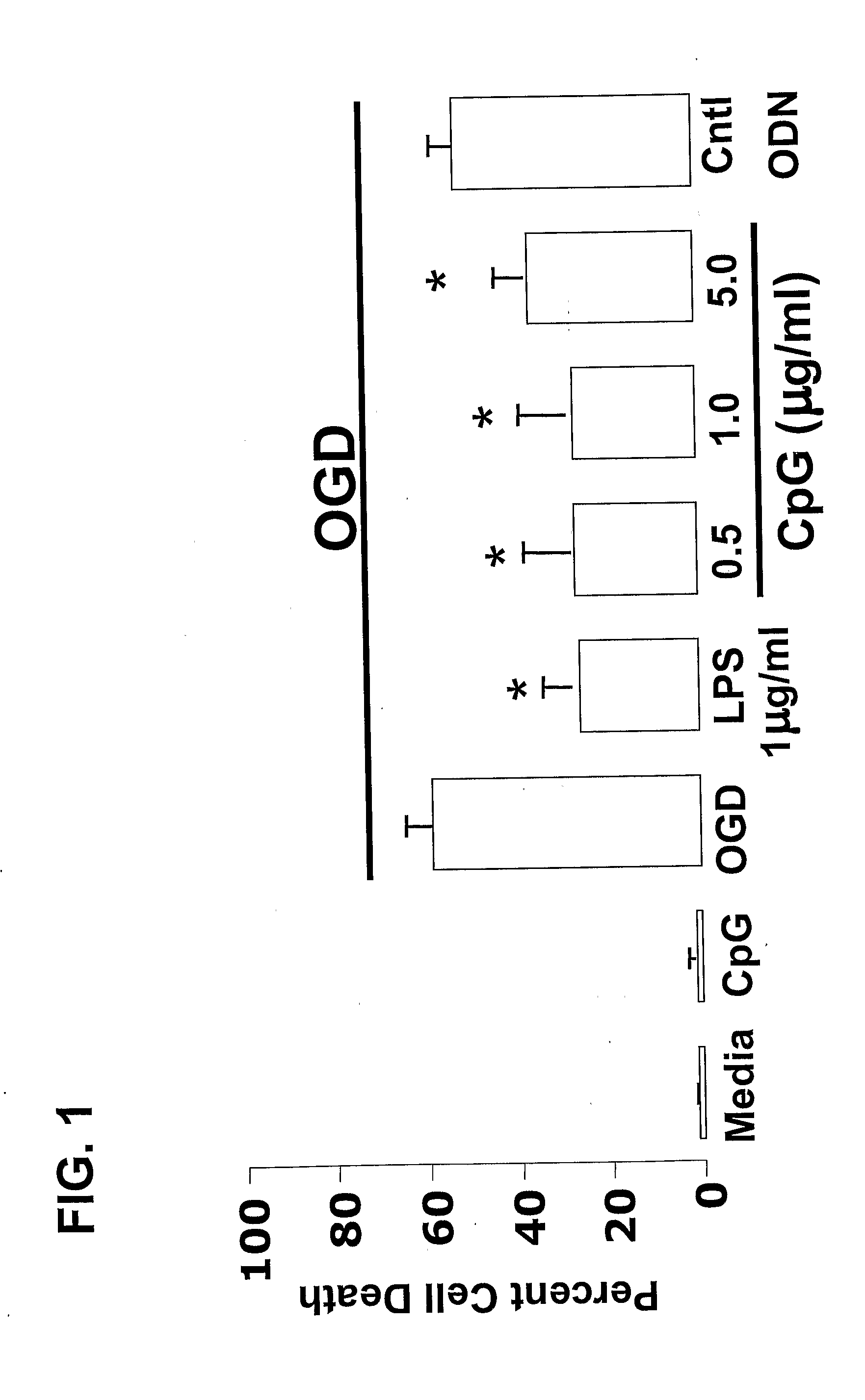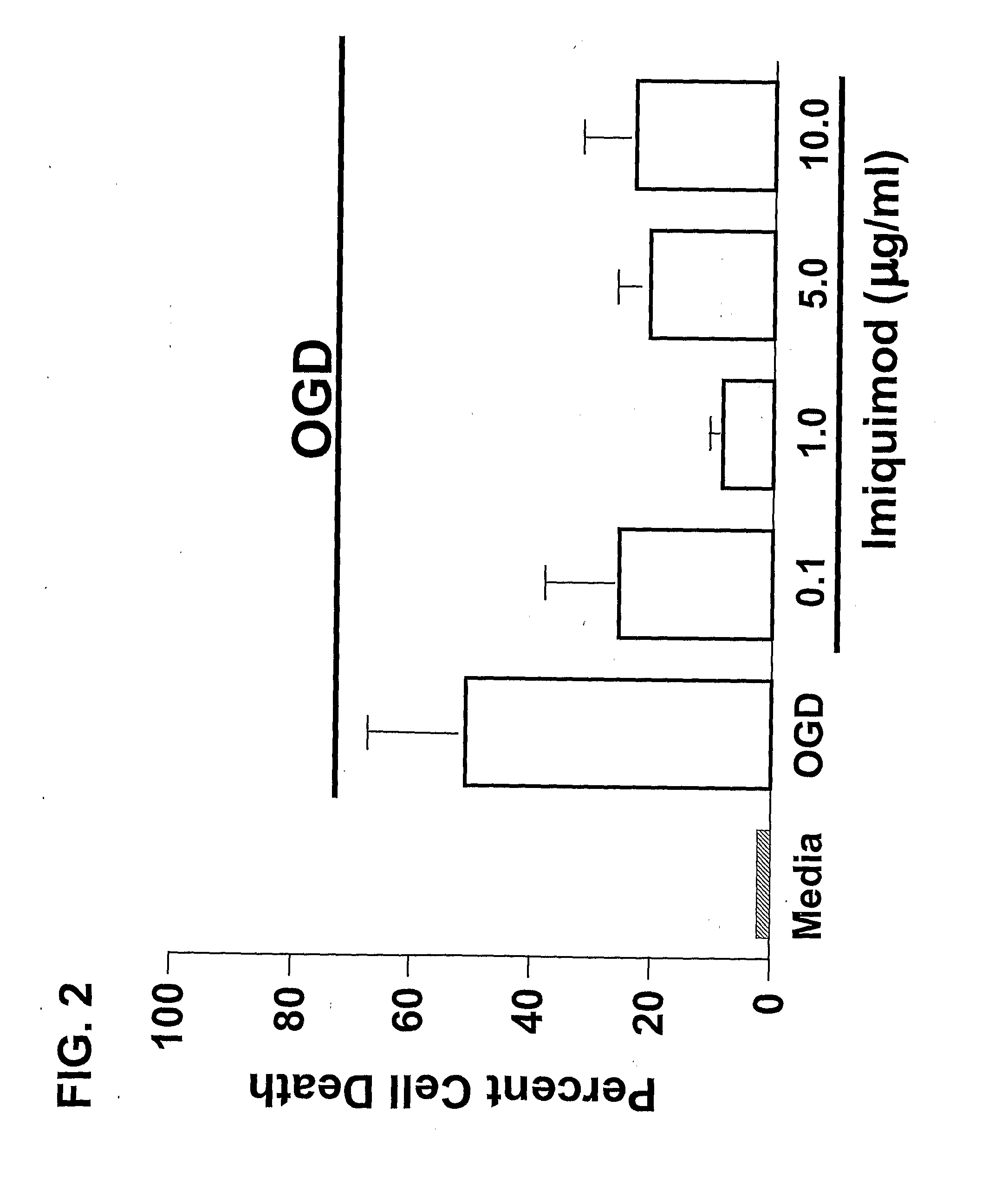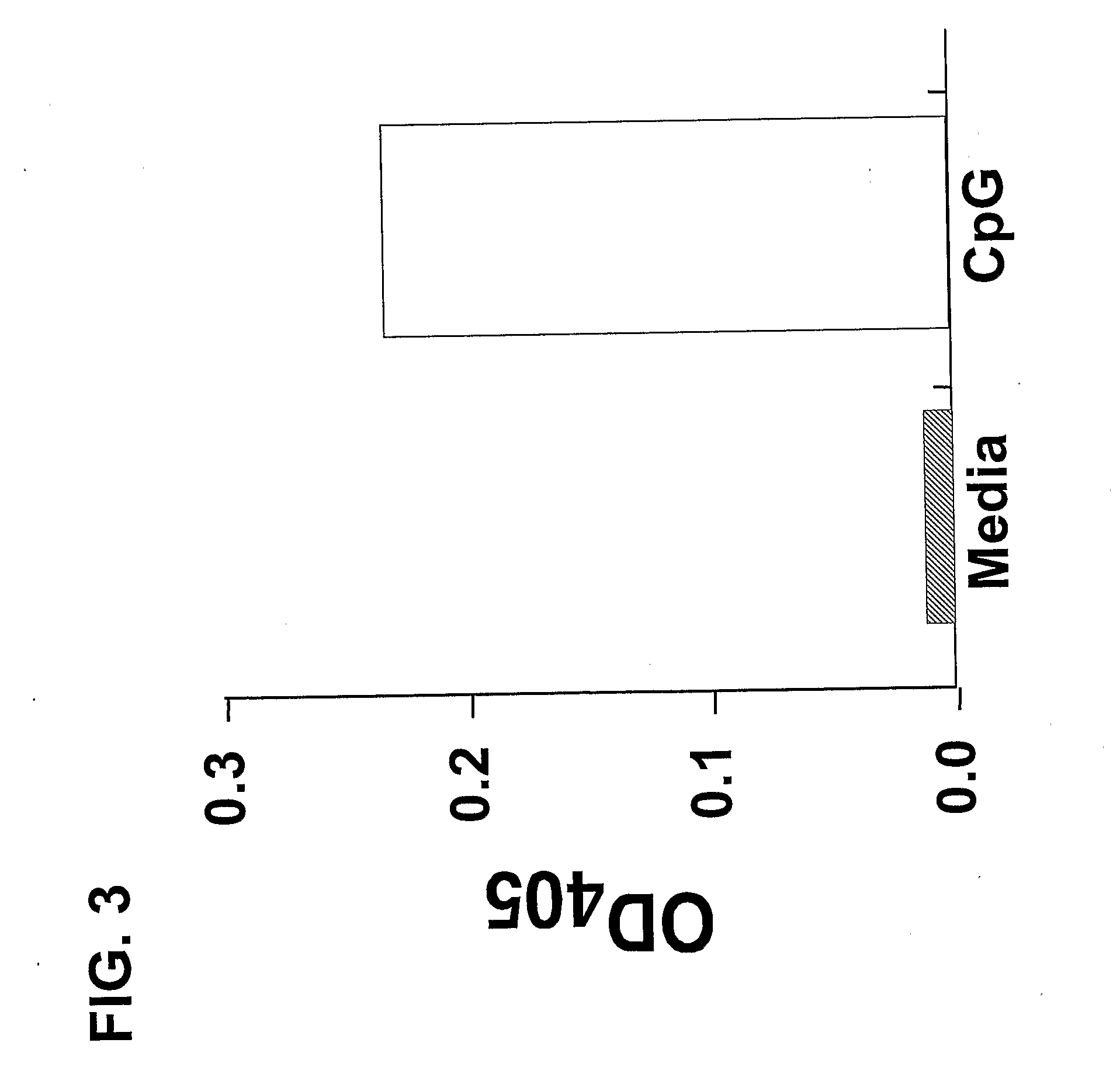Neuroprotectants
- Summary
- Abstract
- Description
- Claims
- Application Information
AI Technical Summary
Benefits of technology
Problems solved by technology
Method used
Image
Examples
example 1
Preconditioning with CpG Oligonucleotide Confers Neuroprotection in an In Vitro Ischemia Model
[0111]This example provides an exemplary in vitro model of neuronal ischemia, and demonstrates that preconditioning with CpG oligonucleotides protects against hypoxia.
[0112]In vitro mouse neuronal cultures: Cortical neuronal cultures were prepared as described Jin et al., Neruochem. Res. 27:1105-1112, 2002) from E-16 mouse pups (C57Bl / 6, Jackson labs). In brief, cortices were dissected and separated from meninges, olfactory bulbs, basal ganglia and hippocampi, and the cortices digested in 0.05% trypsin-EDTA for 15 min at 37° C. Cells were triturated and single cell suspension was plated at density of 5×105 cells / ml. Cells were cultured in Neurobasal A medium (Invitrogen, Carlsbad) containing 2% B27, 2 mM Glutamate. Neuronal enrichment was determined by staining for neurons, microglia and astrocytes with cell specific markers.
[0113]In vitro neuronal ischemia model: Neuronal cultures were tre...
example 2
NF-κB Induction by CpG Oligonucleotides in a TLR9 Expressing Cell Line
[0115]This example provides an exemplary reporter system for detecting binding and activation of a Toll-like receptor. Using this model, results are provided that demonstrate that CpG oligonucleotides that bind to TLR9 activate signaling via the receptor and induce NF-κB activity.
[0116]Human embryonic kidney cell line HEK293 was transfected with an expressible nucleic acid encoding human TLR9 and with an NFκB reporter construct (InvivoGen). The dual transfected cells were incubated with a 5 μM CpG oligonucleotide (SEQ ID NO:1) for 18 hours. Following stimulation with the CpG oligonucleotide (SEQ ID NO:1), the NFκB inducible reporter plasmid (pNiFty2-SEAP; InvivoGen) produced alkaline phosphatase, which was measured calorimetrically following substrate hydrolysis (FIG. 3).
example 3
Preconditioning with an Exemplary CpG Oligonucleotide in an In Vivo Ischemic / Reperfusion Model
[0117]This example demonstrates that prophylactic administration of a composition containing a CpG oligonucleotide is neuroprotective in a mouse model of stroke.
[0118]Intraperitoneal Delivery. Preconditioning agent (20 μg CpG oligonucleotide (SEQ ID NO:1) in artificial cerebrospinal fluid (aCSF) or aCSF alone (control) was administered intraperitoneally to subject mice at designated timepoints prior to middle cerebral artery occlusion (MCAO) as described below.
[0119]Ischemic / Reperfusion Model. Following administration of a preconditioning agent or control composition, adult (˜3 months old) male C57BL / 6 mice were subjected to 45 min MCAO according to the monofilament suture method previously described in detail (Hill et al., Brain Res. 820:45-54, 1999). Mice were anesthetized by halothane inhalation (4% / L O2) and maintained with 1.5% / L O2. The middle cerebral artery was blocked by a silicone...
PUM
| Property | Measurement | Unit |
|---|---|---|
| Time | aaaaa | aaaaa |
| Time | aaaaa | aaaaa |
| Dimensionless property | aaaaa | aaaaa |
Abstract
Description
Claims
Application Information
 Login to View More
Login to View More - R&D
- Intellectual Property
- Life Sciences
- Materials
- Tech Scout
- Unparalleled Data Quality
- Higher Quality Content
- 60% Fewer Hallucinations
Browse by: Latest US Patents, China's latest patents, Technical Efficacy Thesaurus, Application Domain, Technology Topic, Popular Technical Reports.
© 2025 PatSnap. All rights reserved.Legal|Privacy policy|Modern Slavery Act Transparency Statement|Sitemap|About US| Contact US: help@patsnap.com



